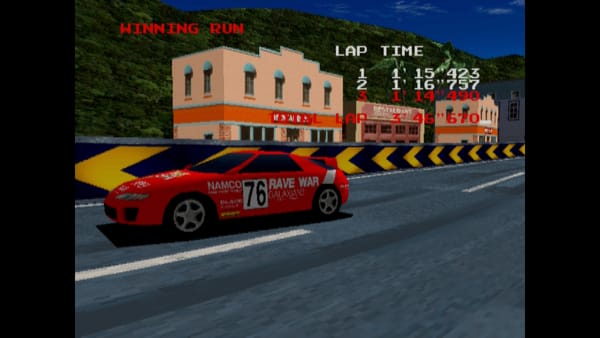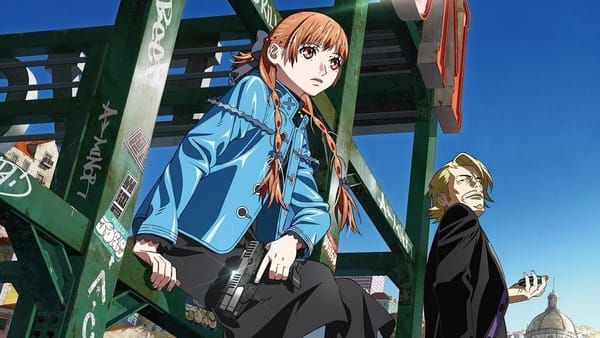Like a Dragon Gaiden - The Man Who Erased His Name is for people who really missed making Kiryu Kazuma hit people
Everything else is quantity over quality
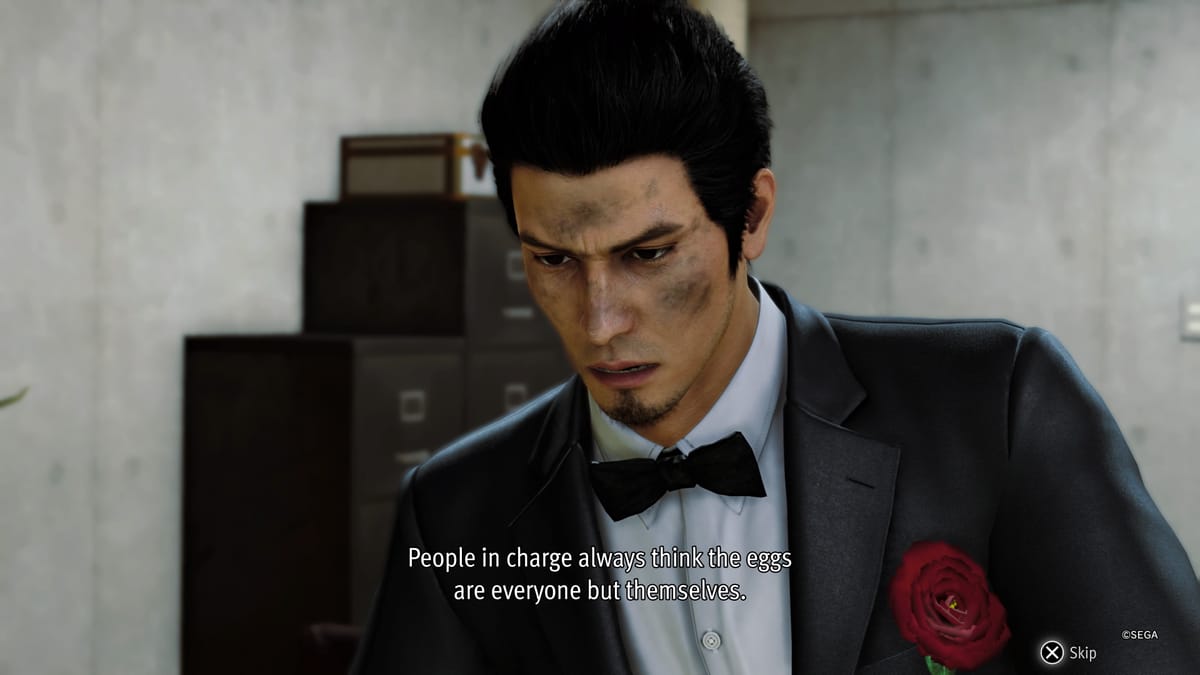
I won’t tell you “what happens”, but some details of this game’s story— and thus the series story including Yakuza 6 and Like a Dragon (Y7)— are necessary to give the game a review at all. Sorry, statute of limitations is up on some of this stuff; it’s been years.
Since the release of Like a Dragon (formerly the Yakuza series; Like a Dragon is Yakuza 7) a couple of years ago, the series informally split into two sub-divisions: the mainline series, now changed into an RPG, and side games (like this game and the Judgment series) that stick to the series’ action roots.
I definitely prefer the “action” side of the series. My argument is that no game did it quite like the old Yakuza blend of action, exploration, and storytelling, even if there have been quite a lot of these games, and as this game demonstrates not much ground left for them to cover. And I’d argue that its action was the most compelling part: that heavy, bone-crunching street violence, the satisfaction of a scumbag gangster gawking in shock as his jaw gets punched out in slow motion.
By comparison, Like a Dragon was just another JRPG, and not a very good one at that. I’m not inherently opposed to the series as an RPG, but the bigger problem is that Like a Dragon was a bore.
Anyway, there’s definitely a camp of people out there who think like me, enough of us that there’s an unofficial “side series” for us. With the future of the Judgment series in doubt-- due perhaps to the likeness rights for its celebrity leading man, Takuya Kimura— Ryu Ga Gotoku Studio returns to Kazuma Kiryu, the series protagonist who’s just too damn popular to retire, even though all his stories are now about him retiring.
I don’t think it’s coincidental that the new “agent Kiryu” spends his spare time confined to a temple, failing to find inner peace via meditation in a place he himself describes as a limbo. That’s where this character is as a real-world Product, too.
Speaking of Agent Kiryu…
By the way, this might not be the game you want to start the series on: while its story basically stands alone, the game exists to clarify the questions raised by Kiryu’s sudden appearance in Like a Dragon (Gaiden means “side story”). After the events of Yakuza 6— a game meant to be a swan song for Kiryu, a character too profitable to retire— the former Dragon of Dojima is forced into working as a secret agent for the Daidoji syndicate.
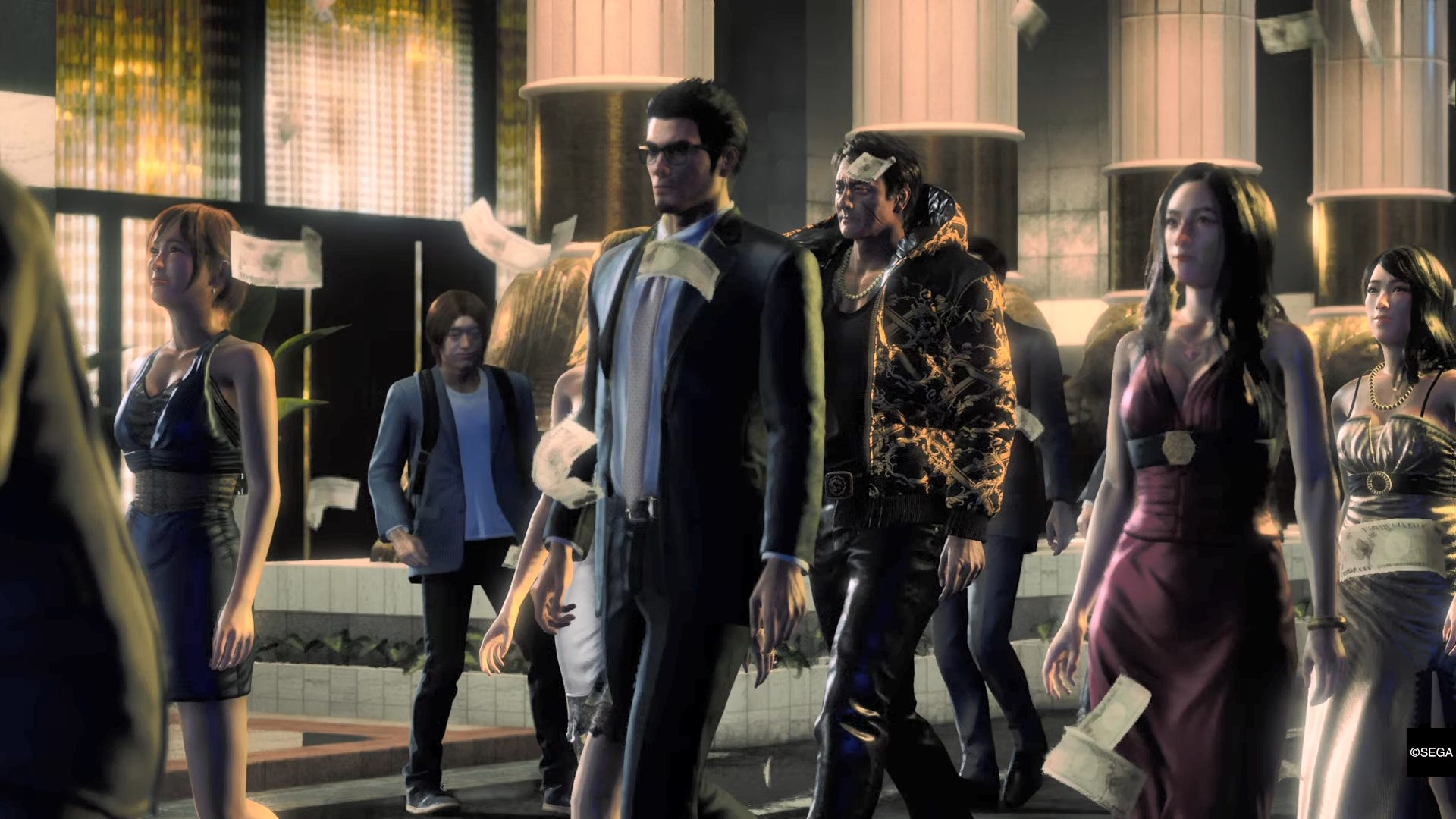
Kiryu is not a spy, and he never once attempts to be sneaky; this is a guy who changes only one syllable in his name, rampages through Sotenbori wearing a pair of glasses as his only disguise-- like he’s Clark Kent-- and simply responds “No, I’m not Kiryu, I’m Joryu” to the multitude of characters who recognize his face throughout the game.
“Agent” Joryu simply accents his usual skull-cracking with cartoonish James Bond gadgets like an unlimited supply of exploding cigarettes, a wrist-mounted rope that works exactly like Spider-Man’s web shooter, and of course, flame-blasting rocket boots. You spend this whole game raising hell in Sotenbori in Osaka, getting deeply involved with Omi Alliance drama in a story that leads up to Kiryu’s surprise appearance in Like a Dragon.

The agent persona is backed up by its own fighting style focusing on evasion and crowd control, similar in function to the Crane style in the Judgment series. If you lean very hard on the Agent tricks— rocket boots to never get caught, bombs to blow up crowds, and drones to fly into a boss’ face over and over again until he is dead— you’ll feel invincible, but also take out opponents very slowly. To really dish it out in single combat, Kiryu switches to his traditional “Yakuza” brawling mode.
Plenty of brawling to be had
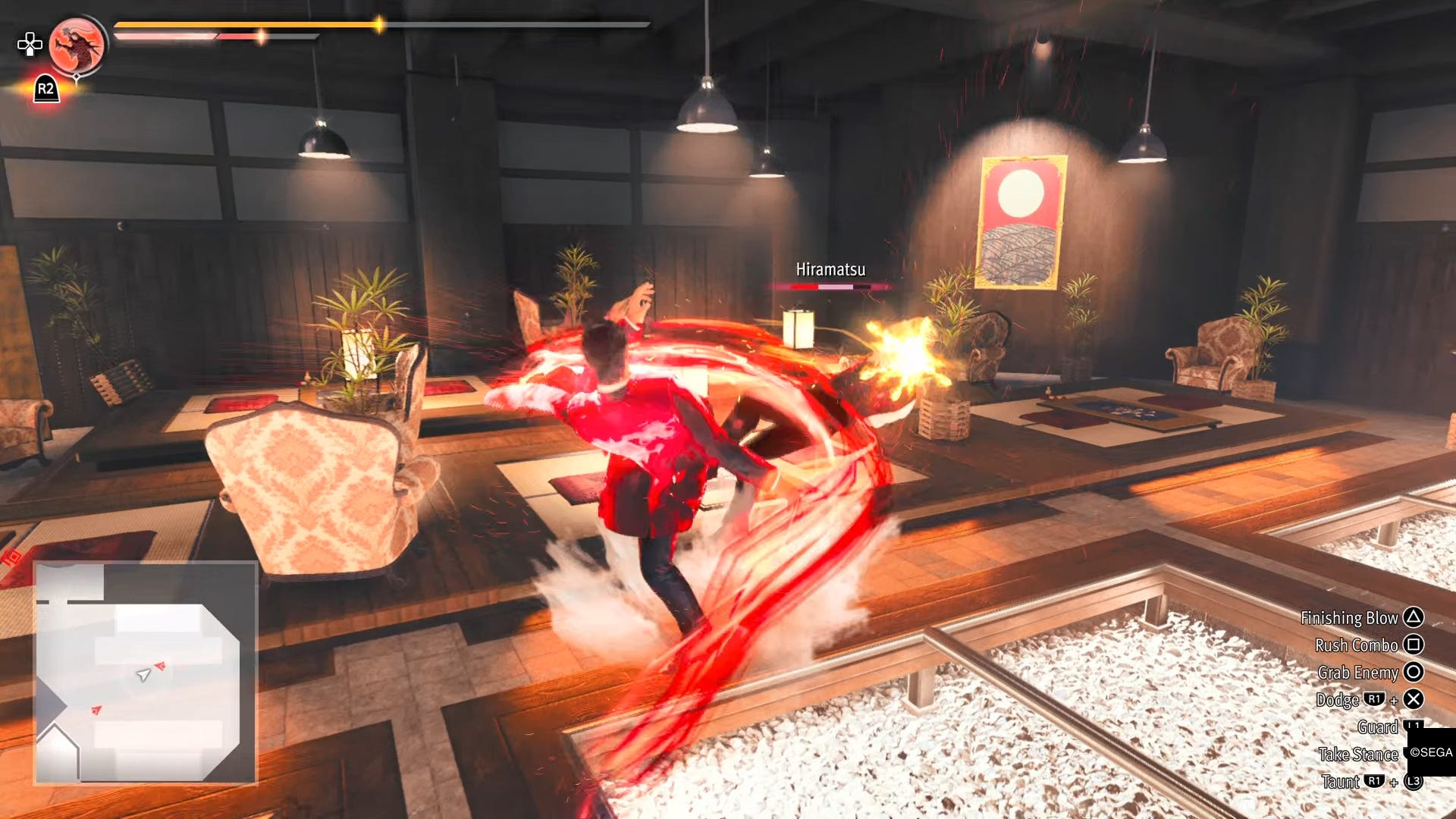
This is an action game, and the Like A Dragon series is unlikely to ever return to that format except in side games like this, so the developers packed it tight with tons of combat. And to tell the truth, the high-quality combat— tough but not merciless, emphasizing those nice, crunchy, satisfying impacts— is the specific reason this game was worth it for me.
There’s an focus on big crowds, especially as the game goes on: at a point you’re regularly fighting against over 20 gangsters at once, and in the major boss battles it can be hard to see where the hell Kiryu even is. Street thugs are maybe a bit too aggressive and spawn too often, especially when you have to deal with so many of them at once.
There is also an entire fighting mode in the form of the Coliseum for players who really want to fight for a good, long time… or players who want to grind experience in the form of its superior cash rewards. (Like in Zero, you use cash to enhance your skills and raise your stats.) I’d describe this mode as about 50% optional, though this may vary by your difficulty setting. Coliseum battles range from pushovers to some very tough challenge fights against Like a Dragon series regulars (you should really buy the $5 DLC).
The Coliseum also contains the series’ now-requisite “mobile game mode”: you can recruit and raise soldiers for massive team brawls. Like the typical mobile game, this mode is a lot of fun until you run into the level designed to check your crew’s stat numbers and force you to pour massive amounts of money into grinding levels in order to proceed.

There’s technically a second city map attached to the Coliseum, by the way; the luxurious Castle. Without ruining any storyline, it’s not so much a full area as it is a very large casino.
Note that I played on Professional difficulty. I actually found this difficulty to be perfect for me, as this series goes: it does require that you pay attention to the opponent and dodge them properly, but it doesn’t kill you in one hit like the Legend/Dragon of Dojima difficulties in other titles. You can of course overload on healing items like usual in this series, but with the tough enemies and bosses on Professional mode, that will only get you so far in the big battles. A few of the climactic battles have bizarre balance in Professional— like a big brawl where a boss can kill you from offscreen, or an escort mission where the target dies instantly1— but for about 95% of the game it’s just right.
Side attractions in the main course

If you did a story-only run of Like a Dragon Gaiden on Easy mode you’d be done very quickly2: I took 16 hours because I played it on the hardest difficulty, and that required me to do some grinding to get strong enough to survive the grueling finale. (On Professional, some bosses *will* kill you in one hit!)
The story is so short, in fact, that the game is constantly trying to pull you to the side to get you to do something else. More than other games in this series, Like a Dragon Gaiden leans hard on the presence of mini-games and side activities to keep the player occupied in the long term. Unfortunately, there’s a bit of a quantity-over-quality feeling to side-questing in LAD Gaiden.
The main hub for side stories is the Akame Network, which is also your home base off the couch of a cute Osakan private investigator (Akame, played by idol First Summer Uika). Rather than running into those delightful old Yakuza side stories on the street, you get them from Akame’s office (similar to how it works in Judgment).
(A little basic Japanese for you: “Akame” means “red eyes”, which is why Akame’s signature color is red and her quest markers are a red eye.)
You must do at least a little work with Akame to finish the game: if you do nothing at all for her, you’ll eventually be forced to do so at two different checkpoints in the story. But Akame’s quests are fully integrated into the game, and you’d have to be consciously trying to ignore them. Instead of finding side stories in the street, you find a the dreaded “map dotted with exclamation points”: a whole lot of very simple fetch quests of the “get me item X” or “save me from these thugs” variety. These are clearly low-effort busy-work to puff out the game length, but they’re also painless enough that you won’t actually be bothered doing them. I hope they don’t come back in future games; it’s always a bummer to see this series do things to be more like Everybody Else.
By the same token, the side stories in this game are plentiful, but also very hurried: most take about five minutes flat to finish. The extreme brevity and similar nature of most of the stories means that very few land as memorable in the way previous Yakuza side stories do. Maybe three of the side stories I played were actual “stories”; two were devoted to callbacks to Yakuza Zero and Judgment. The rest were about going to punch some guy, and then punching the guy, and then being done.
A short story that you’ve already played before

The main story for Like a Dragon Gaiden could have been anything at all, so long as they explained what Kiryu was up to that made his appearance in LAD so forced and awkward. We get those answers pretty much immediately: he’s trapped working for the Daidoji syndicate and the Omi, leading up to the yakuza dissolution you might remember from LAD. But there isn’t really a whole game’s worth of story to hang on just that, so in practice, Kiryu spends the game settling some Omi infighting with his fists.3
Like a Dragon Gaiden leans on well-worn genre cliches— the old hero who wants out of the game, his ambivalent handler/friend, the ruthless young upstart, the other ruthless young upstart— and delivers a story you’ve honestly seen a million times in these games. I don’t think it’s series fatigue for me: there’s just nothing here that you haven’t seen before, done better. With a ten-hour story, the game doesn’t have the running time to get the series’ usual intrigue and dramatic twists going.
The game’s key, long-running fake-out did catch me by surprise. The setpieces— especially the finale— impress as always as Kiryu smashes his way through big crowds and an entire building. It’s got the man-to-man final boss catharsis that LAD’s story couldn’t allow. The ending— which has nothing to do with the main story— is a gut punch that had my face dripping with tears. But almost nothing in LAD Gaiden’s moment-to-moment story is actually fresh or surprising. The ending is a tearjerker, but the story you play through doesn’t really tie into it at all. Nothing in LAD Gaiden’s main story justifies its existence.
Series specialty, Other Stuff
As a retro Sega diehard, I purchased LAD Gaiden as soon as it came out without a second thought, and that didn’t actually have anything to do with my following the LAD series. Rather, it was the games in the arcade.
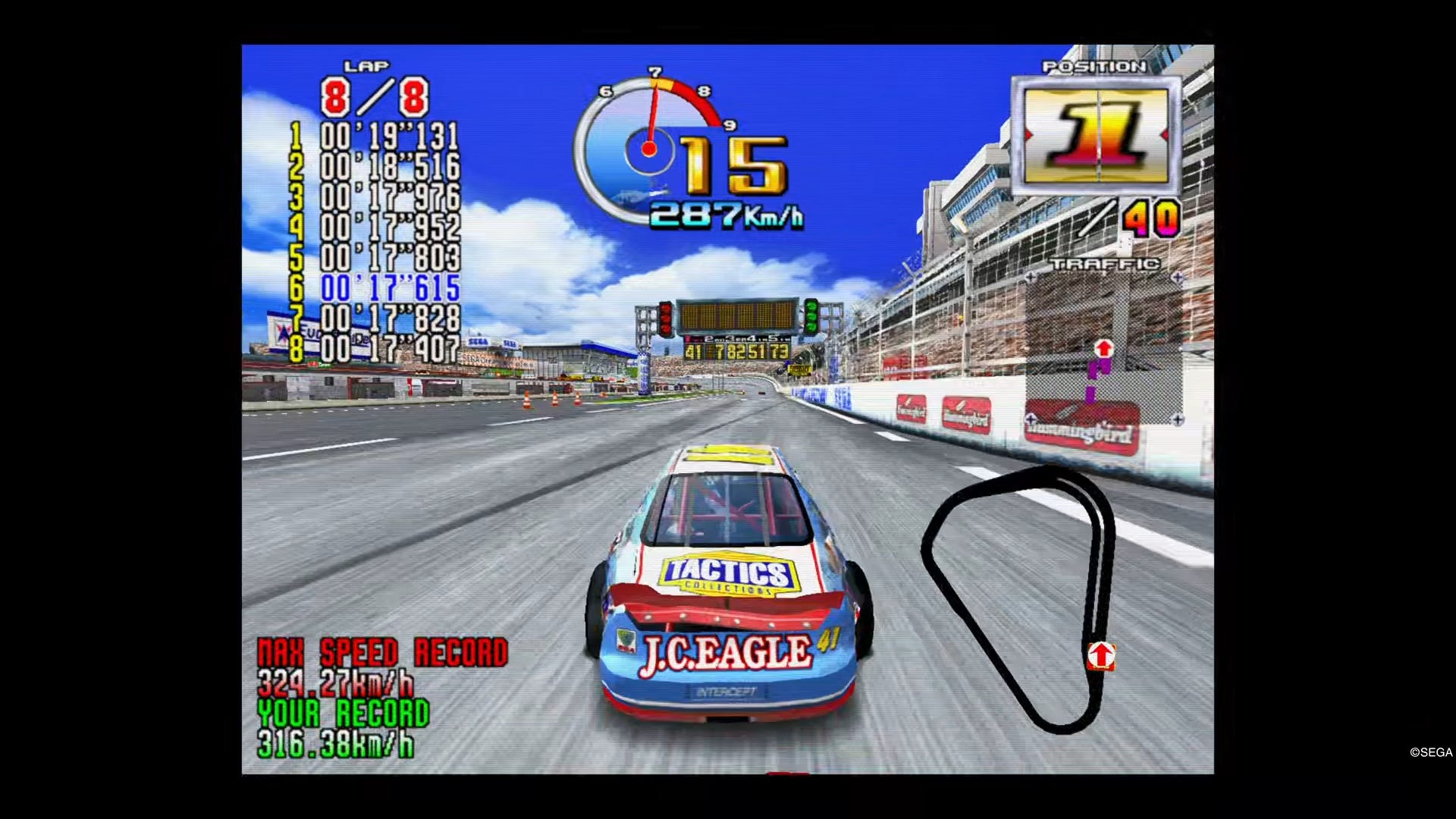
The mostly-unreleased (Japan and Europe Dreamcast; not a perfect port) Fighting Vipers 2 and the totally-unreleased Daytona USA 2 (as Sega Racing Classic 2, for reasons of copyright), rare gems both, are sitting in the game’s arcades for you to enjoy. Fighting Vipers 2 is the underrated spinoff of Virtua Fighter where all the crazy ideas went, like smashing opponents’ clothes off and a guy who can fight from on top of his bike. Daytona USA 2 also goes all the way off the rails with surreal tracks and even wilder physics: you can accelerate while drifting! As a retro lover I’d pay good money for each one of these games by themselves, and I know exactly what the LAD series does to get me to buy these games… but also, I like both LAD and old Sega, so I win every time.4
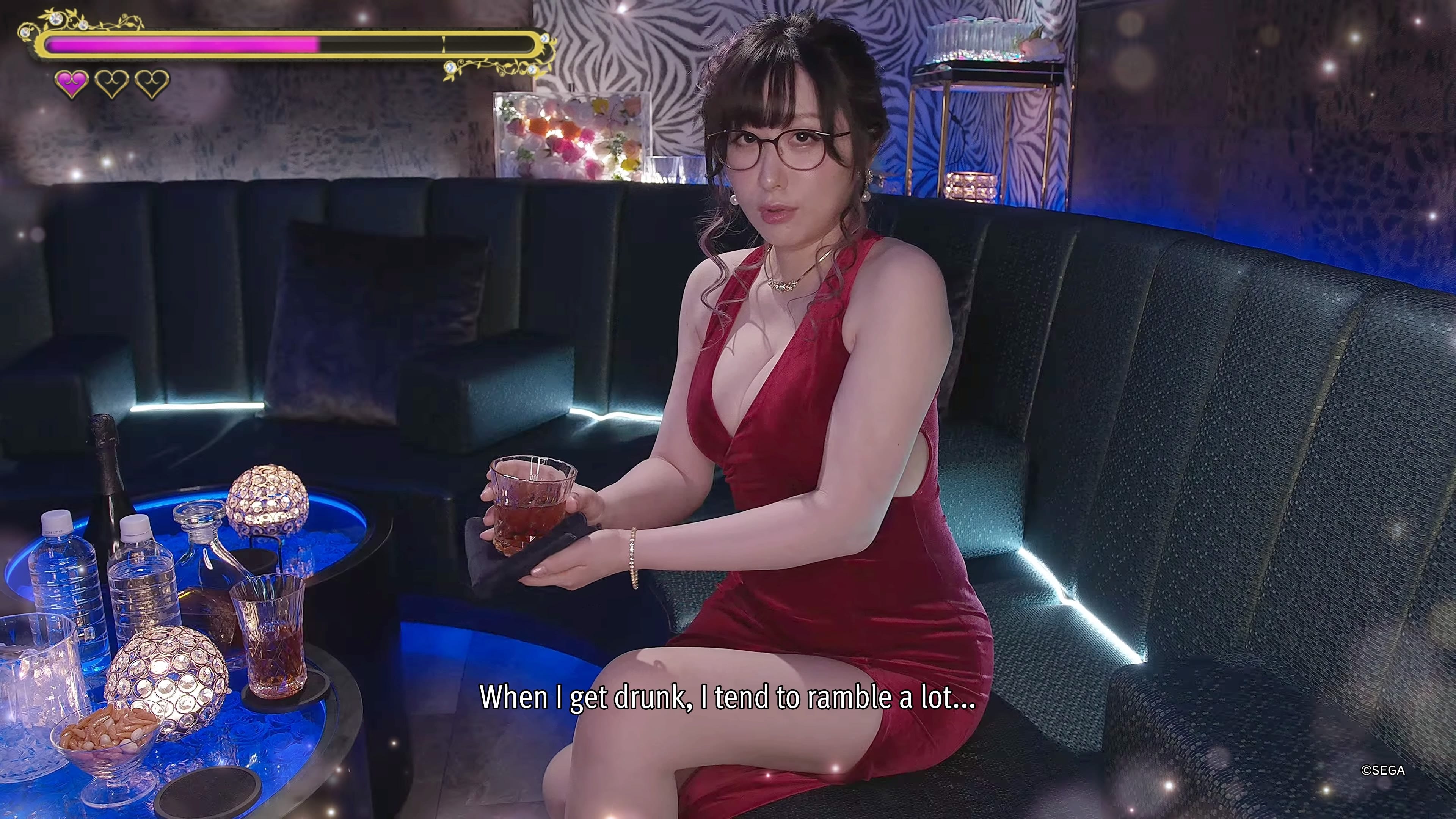
Aside from newly emulated arcade games, there is the cabaret club, about which characters look at the camera and wink “wow, it’s so immersive! So real!”. The joke being that this time, the cabaret club sections are in full super-high-resolution live-action video.5 There are five different live-action girls to faux-romance, the most well-known of whom to Western players is probably the streamer/Vtuber/Kiryu super-fan Kson. The cabaret gameplay is pretty much identical to previous series entries otherwise.
As for the rest of the extras, the devs reuse as much as they possibly can from previous games. Golfing, darts, mahjong and all the rest are back on the Sotenbori strip. The big one for Yakuza Zero fans is probably the return of Pocket Circuit. It’s just that they’re reused material: repeating a theme, here.
I had a good time punching guys, but you can probably miss it
In the moment, I really enjoyed LAD Gaiden, because I enjoy punching guys as a worthy end in and of itself. But the game didn’t really give me the same kind of full-package catharsis— gameplay *and* story *and* character— that other games in the series have. The story is boilerplate, the characters— save Akame— are too flat to grow on you, and when it comes down to it the one thing that really got me through the game was its core: that simple, satisfying dodge’n’punch action. What can I say: Kicking down that yakuza office door and putting guys’ heads through furniture is something I’ll never, ever get tired of doing.
If you want a great action-style LAD game and you haven’t played either Judgment game, play those. If you only play one of those, make it Lost Judgment. If just you want to know what happened with Kiryu, I guess you gotta buy this, huh?
But if you asked me whether I wanted to see games more like Judgment— full-fledged and memorable stories that aren’t necessarily connected directly to the Like A Dragon series— or a half-game starring a beloved character like LAD Gaiden, I’d take Judgment 3 in a second. But I guess I understand in my heart, with some sadness, that Majima Gaiden would probably sell better.
Whichever way RGG decides to go with these projects, I need a home port of SCUD Race to complete the Daytona USA Trilogy. Thanks in advance, guys.
You have to upgrade the spider rope and use it immediately, btw, or you *will* fail the mission ↩
The day LAD Gaiden came out, people were already posting video clips of the demo of Infinite Wealth, the next LAD game, the game comes with. The thing that’s impressive about that is you need to finish LAD Gaiden’s story to unlock the demo! ↩
Surprisingly, the Korean mafia Kiryu is seen hanging with in LAD are only mentioned in passing and his time with them is fast-forwarded; I had assumed the game would be about them, but instead it seems that they’ve been written out. You’re in a very limited chunk of Yokohama for about five minutes of this game, and— pure fanboy speculation here— I wonder if the original plan was to have both Yokohama and Sotenbori until the scale of the game was cut down. I’ll miss the lady Korean mafia boss. ↩
There’s also a Master System buried fairly deep into the game, with the games being hidden around town. ↩
I noticed a couple of live-action shots cut into the opening of the game: the video is so clean and the game graphics are so high quality that most players probably won’t be able to tell the difference! ↩
